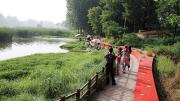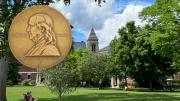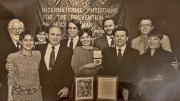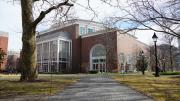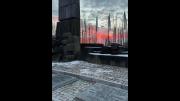1940: FDR, Wilkie, Lindbergh, Hitler—the Election Amid the Storm, by Susan Dunn, Ph.D. ’73 (Yale, $30). Some elections really are watersheds. Here, the indefatigable Third Century professor of humanities at Williams College extends her prior narrative, Roosevelt’s Purge (on the president’s effort during the 1938 midterm campaign to defeat party members who resisted his initiatives), with a gripping narrative of the dramatic 1940 contest for the White House.
Intuition Pumps and Other Tools for Thinking, by Daniel C. Dennett ’63 (W.W. Norton, $28.95). The author, University Professor at Tufts and co-director of its Center for Cognitive Studies, presents a lay summing-up of his work as a philosopher, introducing “intuition pumps” and other devices for provoking, and providing insight into, thought.
In the Balance: Law and Politics in the Roberts Court, by Mark Tushnet, Cromwell professor of law (W.W. Norton, $28.95). A legal historian and scholar of judicial review on the Law School faculty examines the Supreme Court, as led by Chief Justice John G. Roberts Jr. ’76, J.D. ’79, and finds not neutral “umpiring” but a politicized jurisprudence on a politically divided court in a highly partisan era.
Sidetracked, by Francesca Gino, associate professor of business administration (Harvard Business Review Press, $25). A specialist in negotiation and decisionmaking details the obstacles—narrow focus, lack of perspective, and so on—that derail decisions, and suggests strategies for sticking to the plan.
Bioluminescence: Living Lights, Lights for Living, by Thérèse Wilson, senior research associate emerita, and J. Woodland Hastings, Mangelsdorf research professor of natural sciences (Harvard, $45). A clear explanation, beautifully illustrated, of the mechanisms and evolutionary dispersal—far beyond summer’s fireflies—of one of nature’s most beguiling phenomena.
The Citizen Patient, by Nortin M. Hadler, M.D. ’68 (University of North Carolina, $28). A professor of medicine and microbiology/immunology and a rheumatologist, the author is a skeptic about the contemporary healthcare system and “the many perversities that characterize” it, driving up costs and clouding the doctor-patient relationship. He addresses consumers, urging them to understand the system and to envision reform for the benefit of patients.
How Everyone Became Depressed, by Edward Shorter, Ph.D. ’68 (Oxford, $29.95). The Hannah professor in the history of medicine—and professor of psychiatry—at the University of Toronto examines the ever-broadening diagnosis of depression, its frequently inappropriate (in his view) treatment with antidepressants, and, he asserts, the fundamental misunderstanding of a suite of symptoms and problems in need of informed care.
Probably Approximately Correct, by Leslie Valiant, Coolidge professor of computer science and applied mathematics (Basic Books, $26.99). A scholar at the intersection of computing and evolutionary neuroscience, Valiant explores “ecorithms”: algorithms that learn by interacting with their environment, not from their designer—and so are fundamental to the process of evolution. His text is clear and approachable, with some work; the argument is sweeping.
Alice Aycock Drawings, by Jonathan Fineberg ’67, Ph.D. ’75 (Yale, $45). The Gutgsell professor of art history emeritus at the University of Illinois at Urbana-Champaign, who also curates at various institutions, provides the analytical continuity for an exhibition catalog/book of the industrial-techno sculptor’s fantastically detailed drawings.
Designed Ecologies: The Landscape Architecture of Kongjian Yu, edited by William S. Saunders (Birkhauser, $54.95). The former editor of the Graduate School of Design’s Harvard Design Magazine here assembles expert views on, and project descriptions of, the work of Kongjian Yu, D.Dn. ’95. Yu still commutes from Beijing to teach studios at the GSD; his firm, Turenscape, is perhaps the preeminent landscape enterprise in China, and he is a leading voice for environmentally sound design in a country that desperately needs a new model of urban development. His work was covered in “Global Reach” (May-June 2010, page 51).
